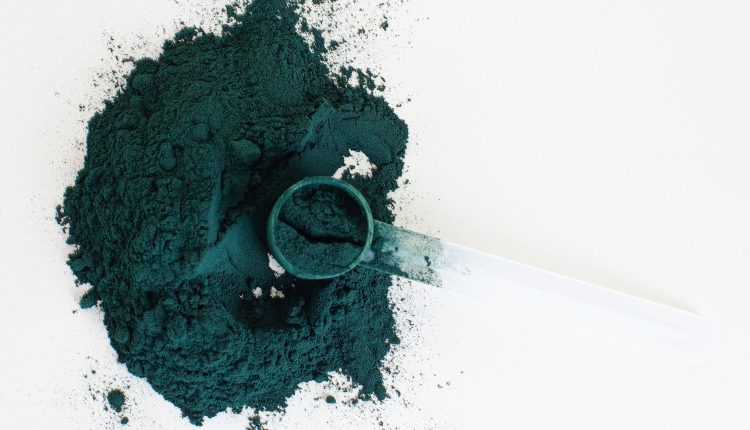
Natural food coloring is being preferred over synthetic food colors to a very large extent in recent times. This is because natural colors are derived from plant sources which are good for human health while synthetic colors are manufactured in laboratories with the help of chemicals. Synthetic food color that has been approved by food regulatory authorities are still being used in cases where the vibrancy of the food color impacts the appeal of the product or when there are no natural alternatives for a particular color. Now, do you think blue food coloring is natural or synthetic? Blue is a color that is not very commonly available as a natural extract. However, it is very much possible to have natural blue food coloring for use in our food products. Spirulina color is one of the prime examples of natural blue coloring.
Spirulina Food Coloring
Spirulina blue color is a 100% natural blue food coloring that is essentially a phycocyanin pigment extracted from green spirulina (Arthrospira platensis) that grows in closed water bodies. It is the phycocyanin in the green spirulina that gives it a bluish hue of color and its antioxidant and anti-inflammatory properties. These properties make it a nutritious superfood that is much in demand.
Difference Between Green and Blue Spirulina
Green spirulina has an intense, fishy flavor that may not be palatable for everyone. Blue spirulina contains all the nutrition of green spirulina but without the fishy flavor. The taste of blue spirulina is earthier and is easy to use and it has an impressive nutrient profile and is low in calories. Green spirulina has a very high nutritional value and delivers a lot of health benefits but because of its strong flavor, people prefer to use blue spirulina over the green.
Health Benefits of Blue Spirulina
Blue spirulina is a powerhouse of nutrients, which is why it is popular in beverages used by health conscious individuals. It contains the vitamins A, B12, K1, K2, is rich in minerals such as iron and manganese, phytonutrients such as carotenoids and superoxide dismutase, or SOD, and the beneficial linoleic acid, or GLA. Blue spirulina is also widely known for its antioxidant property that fights against free radicals as well as its anti-inflammatory property. Its high nutrient content makes it a useful food ingredient to strengthen the immune system, support cell and cardiovascular health, increase energy and performance, and improve gut health by promoting the growth of beneficial bacteria and helping in detoxification.
How is Blue Spirulina Used?
Blue spirulina offers a vivid blue color to food items in addition to providing high nutritional value which makes it a popular food color to add to smoothies, raw porridges, desserts, bars and baked goods. It cannot be used in foods that require heating since blue spirulina is heat sensitive and its nutritional properties will be lost when processed at high heat. The bright color of the blue spirulina also suffers a loss and it loses its prominence.
Interesting Related Article: “Is Algae Good For You? Six Reasons To Choose This Plant-Based Supplement“

